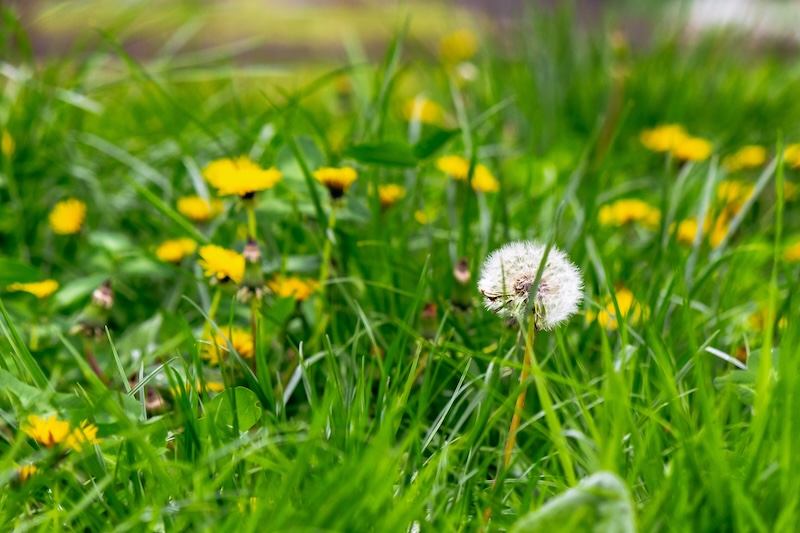Top 10 Broadleaf Weeds Invading Dallas-Fort Worth Lawns: Identification and Control Guide
How to Identify, Prevent, and Eliminate Common North Texas Lawn Weeds
Maintaining a lush, healthy lawn in the Dallas-Fort Worth metroplex presents unique challenges, with broadleaf weeds being among the most persistent problems homeowners face. These unwanted invaders compete with your grass for essential nutrients, water, and sunlight, often thriving in the specific climate conditions of North Texas. At Abracadabra Pest & Weed Control, we’ve helped thousands of DFW homeowners identify and eliminate these common lawn intruders. Our comprehensive approach focuses not just on eliminating existing weeds but creating conditions that prevent their return. Below, we’ve compiled our expert guide to the most common broadleaf weeds in the Dallas-Fort Worth area, along with proven prevention and control methods specifically tailored to our region’s unique growing conditions.

The Most Common Broadleaf Weeds in DFW Lawns
Identifying these common intruders is the first step toward effective control.
Dandelion & Clover: The Persistent Invaders
Dandelions are among the most recognizable lawn weeds with their bright yellow flowers that transform into white, puffy seed heads. Their deep taproot system makes them particularly challenging to eliminate completely. For effective control, maintaining a thick, healthy lawn through regular fertilization creates natural competition that helps prevent dandelion establishment. When removal becomes necessary, selective broadleaf herbicides containing 2,4-D or Triclopyr target dandelions while leaving your grass unharmed.
Clover presents another common challenge for DFW lawns, identified by its characteristic three-leaf clusters and small white or pinkish flowers. Clover often indicates imbalanced nitrogen levels in your soil. Proper fertilization and mowing your grass at a higher height creates shade that naturally suppresses clover growth. For treatment, broadleaf herbicides containing Dicamba or 2,4-D provide effective control when applied during active growth periods.
Seasonal Challenges: Chickweed & Henbit
Cool-season weeds like chickweed and henbit thrive during North Texas’ mild winters and early spring. Chickweed forms low-growing mats with small white flowers, while henbit displays distinctive purple flowers on square stems. Both emerge when your lawn is dormant, making them particularly visible in late winter.
For both weeds, fall pre-emergent application provides the best prevention. Timing is critical in the DFW area – applications in September or early October before soil temperatures drop below 70°F yield the best results. When these weeds are already established, post-emergent herbicides containing Atrazine or MCPP offer effective control, but should be applied when temperatures are between 50-85°F for optimal effectiveness.
Tough-to-Control Varieties: Spurge, Plantain & Thistle
Some broadleaf weeds present unique challenges in the Dallas-Fort Worth climate. Spurge, identified by its low-growing habit and milky sap, spreads rapidly during hot summer months. Plantain thrives in compacted soils common in high-traffic areas of DFW lawns. Thistle, with its spiny leaves and purple flowers, can quickly establish deep root systems in our clay-heavy North Texas soils.
For these persistent varieties, a combination approach works best. Soil aeration helps reduce compaction that favors plantain, while maintaining proper mowing height (typically 2.5-3.5 inches for most DFW lawn grasses) creates shade that naturally suppresses spurge. For established infestations, systemic herbicides that target the entire plant, including the root system, provide the most effective control.
Seasonal Timing for Effective Control in North Texas
The unique climate of the Dallas-Fort Worth area requires specific timing for weed control measures.
Pre-Emergent Application Windows
Preventing weed seeds from germinating is far more effective than battling established weeds. In North Texas, the optimal pre-emergent application windows are:
Spring Application: Apply between late February and early March, when soil temperatures approach 55°F. This timing targets summer annual weeds before they can germinate as temperatures rise.
Fall Application: Apply in September through early October to prevent cool-season weeds that germinate during our mild DFW winters. This application is particularly important for controlling chickweed, henbit, and annual bluegrass.
For North Texas lawns, split applications (applying half the recommended rate at the beginning of each window and the remainder 4-6 weeks later) often provide more extended protection against our region’s variable weed germination periods.
Post-Emergent Treatment Timing
When treating existing weeds, timing your applications to coincide with active growth periods significantly improves effectiveness:
Spring Weeds: Treat between April and May when spring weeds are actively growing but still young. Morning applications when temperatures are between 65-85°F typically yield the best results in the DFW area.
Summer Weeds: For warm-season weeds like spurge and purslane, treat in early summer before they can establish extensive root systems. Avoid applications during extreme heat (above 90°F) which is common in July and August, as this can stress your lawn and reduce herbicide effectiveness.
Lawn Health: Your Best Defense Against DFW Weeds
The most effective long-term weed control strategy focuses on creating lawn conditions that naturally discourage weed growth.
Proper fertilization based on soil testing helps ensure your lawn receives the specific nutrients it needs in our North Texas soils, which often have high pH levels and specific mineral deficiencies. Regular aeration helps alleviate soil compaction common in the clay-heavy soils throughout the DFW metroplex.
Water management is particularly crucial in our region’s hot climate. Deep, infrequent watering (typically 1 inch, 2-3 times per week during summer) encourages deep root growth in your grass while discouraging the shallow root systems of many common weeds.
Keep Your DFW Lawn Weed-Free All Year Long
Managing broadleaf weeds in Dallas-Fort Worth lawns requires understanding both the specific weeds common to our region and the unique seasonal patterns that affect their growth and control. At Abracadabra Pest & Weed Control, we offer customized weed management programs specifically designed for North Texas lawns.
Our seasonal treatment plans target weeds before they become established, while our lawn health programs create conditions that naturally suppress weed growth. Contact us today to schedule your lawn evaluation and receive a customized weed control plan designed specifically for your DFW property.
